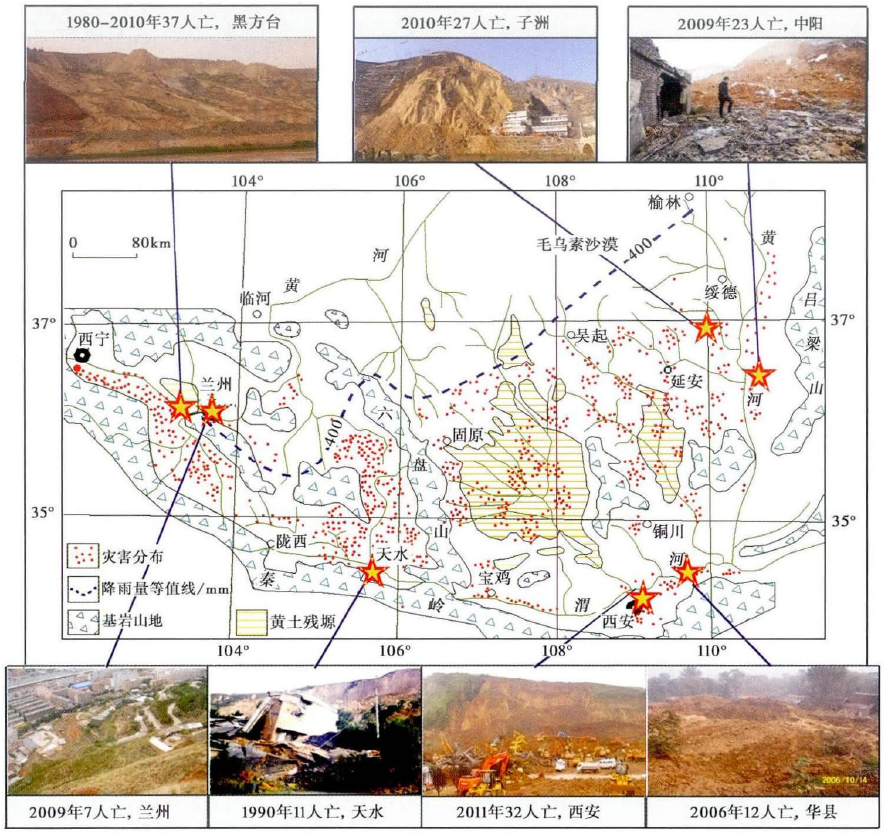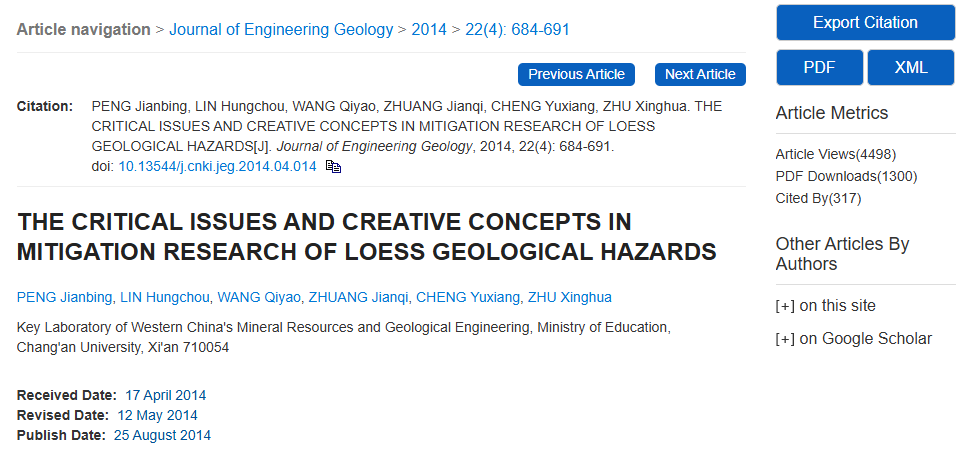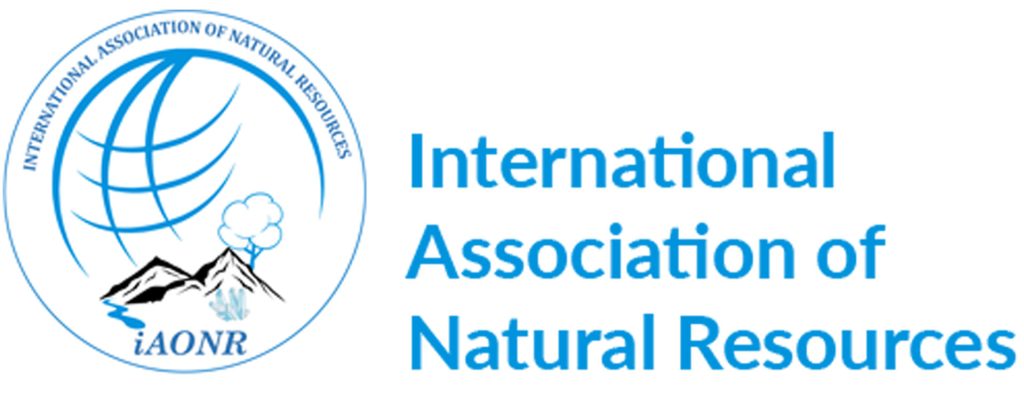Members Highlights: authored by Jianbing Peng
- Article:The Critical Issues and Creative Concepts in Mitigation Research of Loess Geological Hazards

- Source Information
- Original Title:The Critical Issues and Creative Concepts in Mitigation Research of Loess Geological Hazards
- Authors:Jianbing Peng, Hungchou Lin, Qiyao Wang, Jianqi Zhuang, Yuxiang Chen, Xinghua Zhu
- Affiliations:Key Laboratory of Western China’s Mineral Resources and Geological Engineering, Ministry of Education, Chang’an University
- Keywords:Loess, Geological hazards, Evolution mechanism, Early warning, Mitigation
- Source Link: http://en.dzkx.org/article/doi/10.13544/j.cnki.jeg.2014.04.014
- Editor’s Comments
The paper presents a comprehensive analysis of geological hazards in the Loess Plateau of China, by outlining the historical and ongoing challenges posed by these hazards, emphasizing their frequent occurrence and severe impacts on human life, infrastructure, and economic development. The region, characterized by its unique loess deposits, has been a focal point of geological studies due to its susceptibility to landslides, collapses, mudflows, and fissures. Based on engineering geological surveys, the paper identifies critical scientific questions to be solved in natural hazard mitigation and proposes innovative research directions to improve hazard mitigation strategies.
Several fundamental issues in loess geological hazard research are highlighted in this paper. The key scientific challenges include the mechanisms of loess structure and soil behavior in disaster formation, the role of water infiltration and engineering disturbances in triggering hazards, and the complex dynamics of disaster chain evolution. The authors stress the need for deeper investigations into how loess soil’s unique structural properties, water sensitivity, and mechanical responses contribute to hazard formation. Moreover, the paper underscores the importance of understanding how human activities—such as large-scale excavation, infrastructure development, and water management—intensify geological risks in loess regions, often exacerbating hazard severity and unpredictability.
To address these pressing concerns, the authors propose a structured framework for hazard mitigation research. Their strategy advocates for an interdisciplinary approach integrating field surveys, laboratory experiments, in-situ observations, and numerical simulations. They suggest establishing a world-class research base for loess hazards, deepening investigations into loess mechanical behavior, refining predictive models for hazard formation and evolution, and enhancing early warning systems. Additionally, they call for improved risk assessment methods, focusing on real-time monitoring and dynamic hazard control to develop proactive strategies for reducing disaster impact. This holistic approach, aimed at bridging gaps in understanding and technical capability, seeks to support sustainable development in loess regions.
In conclusion, this paper advances fundamental theories on loess disaster formation by integrating complex environmental and human-induced factors into predictive models, and proposing an innovative, systematic methodology for disaster mitigation. Through rigorous analysis and forward-thinking solutions, the authors pave the way for more effective risk management strategies that can be applied to similar loess landscapes worldwide. The paper not only enhances scientific understanding but also holds practical value for infrastructure development, policy-making, and disaster preparedness in vulnerable loess regions.
- Original text summary
This paper provides a systematic perspective of geological hazards in the Loess Plateau, aiming to solve their frequent occurrence and severe impacts on human life, infrastructure, and economic development. The key scientific challenges are demonstrated including disaster formation mechanisms, the role of water infiltration and engineering disturbances, and the complex dynamics of disaster chain evolution. There’s urgent need for deeper investigations into loess soil’s unique properties and the ways human activities exacerbate geological risks. To address these issues, the paper proposes an interdisciplinary research framework integrating field surveys, laboratory experiments, numerical simulations, and real-time monitoring. It advocates for establishing a world-class research base, refining predictive models, enhancing early warning systems, and improving risk assessment methods to mitigate disasters. Through innovative research strategies, it contributes to fundamental theories of loess disaster formation and offer practical approaches for risk management, supporting sustainable development and disaster preparedness in loess regions.

- Original text information

ABSTRACT
Loess Plateau is one of the birthplaces of the Chinese nation. It is also the youngest plateau and has been rising ceaselessly in our world. Besides, it had been recorded the information of global change in detail during the Pleistocene epoch, especially in the aspects of climate changes and geological hazards. According to the statistics of geological hazards in China, there are almost one third of cases in this area. These geological hazards caused great loss of life and properties. Hence, the mitigation of geological hazards in Loess Plateau is urgent and necessary. This paper summarizes geological hazards in Loess Plateau. Moreover, according to the results of previous research and engineering geological investigation, the critical issues and creative concepts, such as the couple analysis of soil mechanics and engineering geology, triggering and evolution mechanism, early warning system and so on, are suggested to mitigate the geological hazards in loess area.
- This issue’s editor
Mr Li AN, Doctoral candidate at Institute of Geographic Science and Natural Resources Research (IGSNRR), the Chinese Academy of Sciences (CAS), focuses on the research of natural resources economics.
